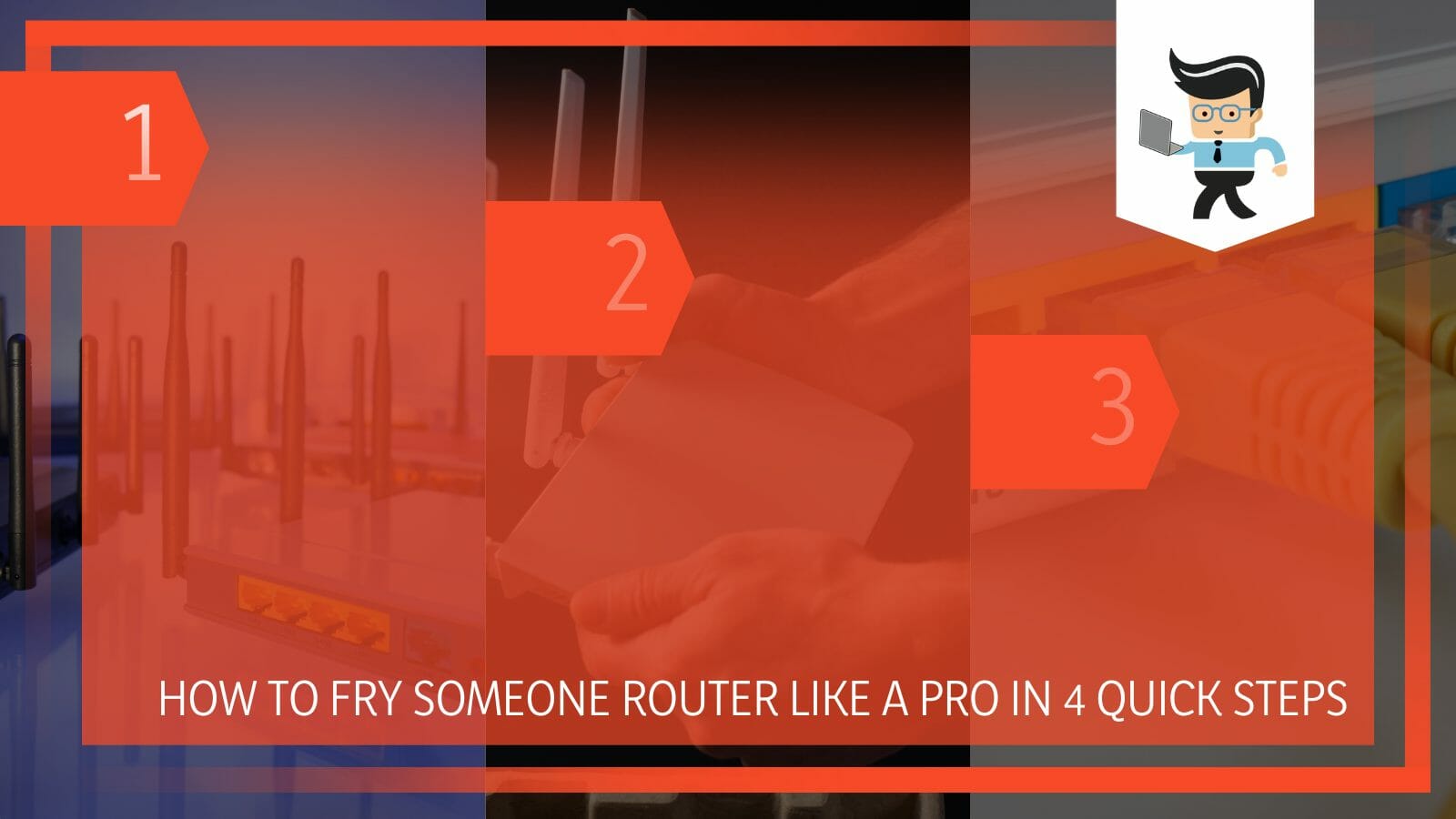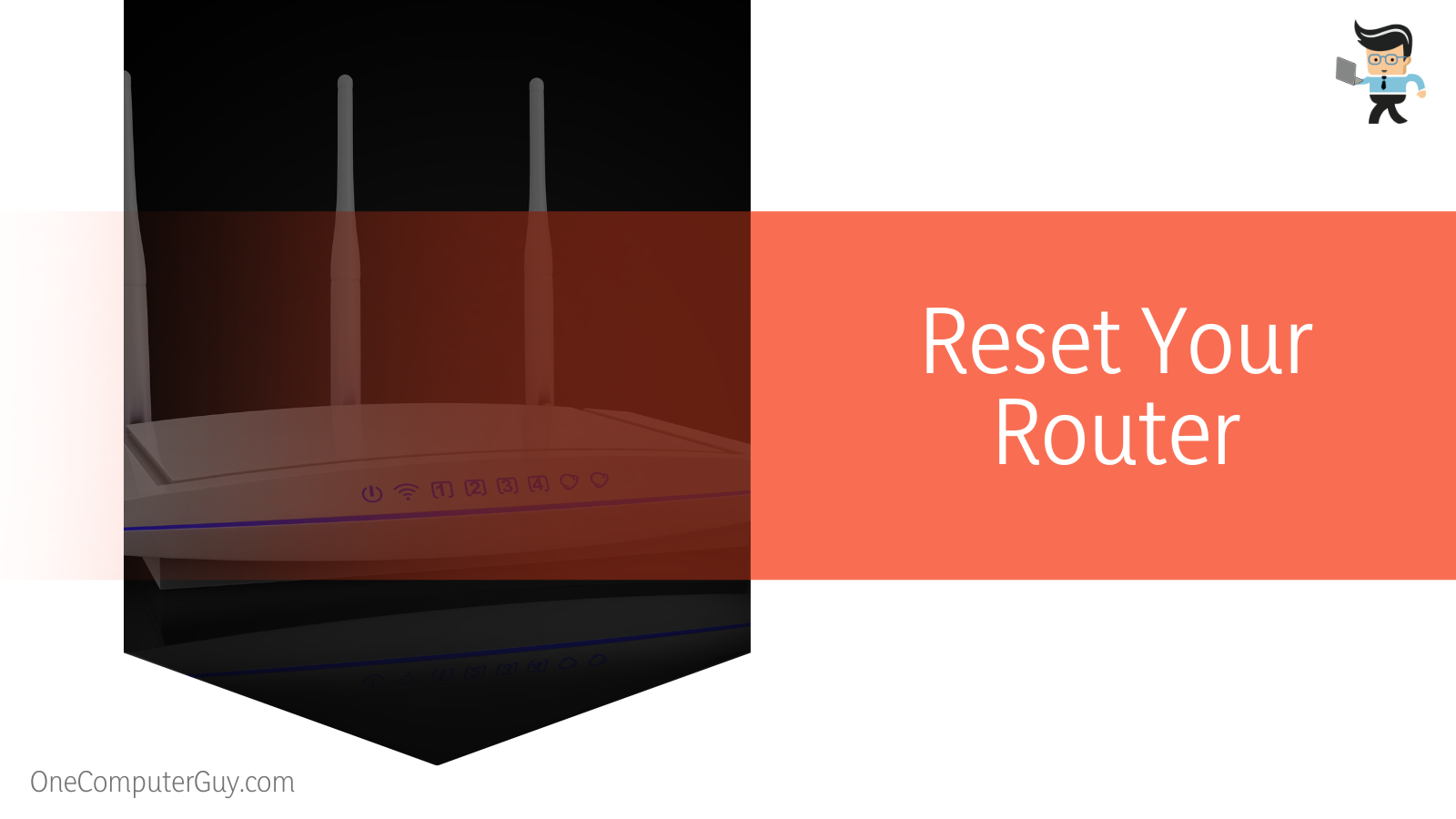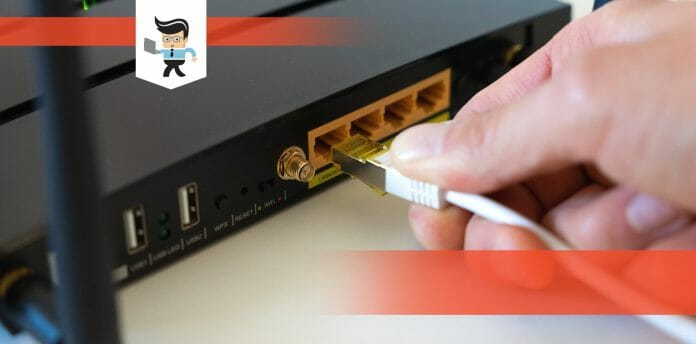Knowing how to fry someone router is a vital skill for internet users and hackers, as they can use it to destroy a router or boot someone out.

Typically, frying a router refers to supplying excessive voltage to a router causing its range and speed to worsen and eventually shut off due to overheating. This post explains the procedure of frying a router and how to know if your router got fried.
Contents
How to Fry Someone Router in 3 Quick Steps
You can fry someone router by executing a DDoS attack on that router. First, you will have to identify the router of interest. The router should establish a connection to the internet and send many requests to the router. This overloads it causing it to crash.
Remember, you will need a “zombie” machine, which you manipulate by injecting malware. Here are steps to follow when frying a router via Denial-of-Service Attacks:
– Step One
The initial step is to identify a router you wish to attack. A distributed denial of service can be executed from multiple remote locations. If you are looking to fry a router in larger organizations, you can spot the primary router, which, if you attack, will boot out all the users or render it unusable.
A router is an attractive target because once compromised, it can attack as a target for distributed denial of service attacks. Furthermore, it can be used as a bot to launch an attack.
– Step Two
After spotting a router of interest, gain remote access and execute your attack. Typically, you will need to send multiple requests to that specific router. This creates pressure on the router and its support system, forcing it to shut down.
This attack is very effective because web resources can only handle a specific amount of traffic at a given time. Therefore, when the data amount or requests flowing into the router or other networked resources becomes too much, users will be unable to access the network
The attack will:
- Exhaust the router’s resources
- Damage the router’s ability to make new connections
- Overheats the router, rendering it inoperable. Overheating damages the circuitry, commonly referred to as frying. If your router cooks too much, you may need to buy a new one.
Here is how to know if router is fried:
- You cannot connect to the internet until the attack stops. Furthermore, you will also need to reset the router.
- During the attack, no other device can connect to that router since it is overwhelmed with a malicious connection request resulting in denial-of-service to legitimate users. So, a DDoS attack can eject users from a network.
The general effect is that the wireless router becomes unresponsive. It is difficult to distinguish an illegitimate traffic request from a legitimate one. This allows the hackers to flood the router with vast amounts of traffic, forcing it to accept all connection requests until its maximum capacity exceeds, resulting in overheating.
– Step Three
Determine the duration of an attack. Usually, the attack on a router can range between a few hours to several weeks, depending on the expansiveness of the network. But a home network should take a few hours to fry a router.

If you correctly know how to fry someones router on Xbox or a network, you can create multiple requests at a go to send them into a router fryer within a short time. For this reason, a router suffering from a DDoS attack slows down or becomes utterly inaccessible to users.
But the question is, is frying routers illegal? It is illegal. Frying involves DDoS attacks, which create botnets. The botnets are illegal and can land you a jail sentence.
– Step Four
You need to remain anonymous to avoid detection. You can pull off one or more of the following tactics to remain anonymous:
- Spoofing: IPv4 and IPv6 cannot authenticate and trace traffic by default. So you can easily spoof sources and destinations with IPv4 networks especially. You can forge packets with the bogus source address, making it easy to trick a legitimate device into responding to these packets by sending thousands of replies to a host victim that never made the request.
- Amplification: You can generate a large amount of traffic with a source multiplier and aim it at a victim router. With this tactic, you send one forged packet that tricks the legitimate service to send thousands of replies to a router.
- Reflection: This involves manipulating the behavior of internet services to hide the actual attacker effectively. You can employ the services of Network Time Protocol (NTP), Domain Name System (DNS), and Simple Network Management (SNMP) servers. Internet users provide traffic and make it more difficult for defenders to point out the attack’s origin since most servers do not keep detailed logs of services using them.
The ability to attack a router is dependent on its form. For instance, if your router has outdated firmware, it is highly vulnerable to cyber-attacks. Besides, dated firmware leads to malfunctioning and can be used as a device to launch an attack.
How to Eject User From Wi-Fi Without Changing the Password
You can remove inactive devices and users from your wifi router by going to the router software> Device Manager and then eliminating all or some devices. Note that this is a manual process so you will be removing them one by one.
But due to the difference in router models, there are different methods you can use. Here is how to remove someone from your wifi without changing the password:
– MAC Filtering
MAC (Media Access Control) is hardware that identifies each network device. Also, each device has a unique MAC Address built into every network card. So you can use your device’s MAC address to automatically instruct your router to allow or deny device access to the network.

Here is how to boot someone offline:
- Log into the routers Access Point control panel
- Go to the WLAN or wireless section, identify the MAC Filtering option, and enable it.
- Now check the MAC Address list for people you want to kick out. Some routers will allow you to either select or unselect linked devices you wish to add to your MAC address list.
– Blacklisting
The blacklist feature allows you to block devices you do not wish to connect to your wireless network. When you add a device to the Blacklist, it will not access your network. The procedure varies with the router brand but is an example of TP-link.
Launch a browser and enter the router IP address
- Sign in to the router’s web-based interface
- Navigate to Advanced, click on Security and select Access Control.
- Enable the Access Control option
- Select the access mode to block devices.
- To blacklist devices, click on Blacklist and select Save.
- Select the devices you wish to block by clicking on the online checkboxes.
- Select the Block option just above the Online Device table. This action adds all the selected devices to the Blacklist immediately.
– Using Third-Party Apps
Third-party tools are an effective way of blocking devices from accessing your wifi network. So you will need to select a specific, powerful tool to help you block unauthorized devices.
The process might vary with an app, so in this case, we will look at the process using FING, an app that works for Android and iOS.
Here is how to disconnect someone from wifi using phone app:
- Download the application (Fing App) from Google Play or the App Store, depending on your device’s operating system.
- Create a Fing account. But you can use it without creating an account
- Launch your application. It opens to an interface with three buttons, Overview, Tools, and Account.
- Tap on the Overview button and go to the bottom of the page’s scan display. Here, you will see multiple options, which you can use to search the devices by different categories. To block unrecognized, filter by unrecognized and block them. Also, you can block known users. For instance, you can block Xbox users using this method.
Note that you will receive an alert if a new device joins your wifi network. Log into your application and block it if you don’t want or accept it if you wish.
– Using NetCut
You can use NetCut on Windows to boot people from your network without frying the router using the steps below:
Disconnect everything from the internet except your PC. This will help to determine the intruder on your network. Any IP address that remains in the system is an intruder.
- Go to the NetCut download page on your browser and download Netcut 3.0, which is optimized for Windows 8 and 10. Install it.
- Double-click on the NetCut app to launch it. This opens a new tab. Click on the Scan button at the top of your page and identify any connections.
- This will unveil a list of connected devices. This appears on the right side of the box in the form of a box with details about the connection.
- Drag and drop the intruders to the left of the page. Once here, they will not access your wifi connection.
– Reset Your Router
You can reset the router to kick out some users using the procedure below:

- Disconnect your router from the modem and locate the Reset button, usually at the back of the router. It is recessed but as small as a pinhead.
- Insert a pin or inverted paper clip in the button and hold for 30 seconds. This will allow the router to reset.
- Let your router turn back on and plug it back into the modem
- Connect it to your network. You will need the stock name and password.
Conclusion
We have shown you that frying a router involves Distributed Denial of Service attacks, which can boot users out of a network.
Here is a quick summary:
- Distributed denial of Service attacks can cause overheating and frying of the router’s circuit.
- Old model routers or routers with outdated firmware are vulnerable to these attacks.
- But you can boot out users from your wifi network using the router’s settings or calling ISP.
- Frying routers is illegal.
We have detailed information about frying routers and how to boot people out of a network. If you face those issues, this post should be beneficial to you.







